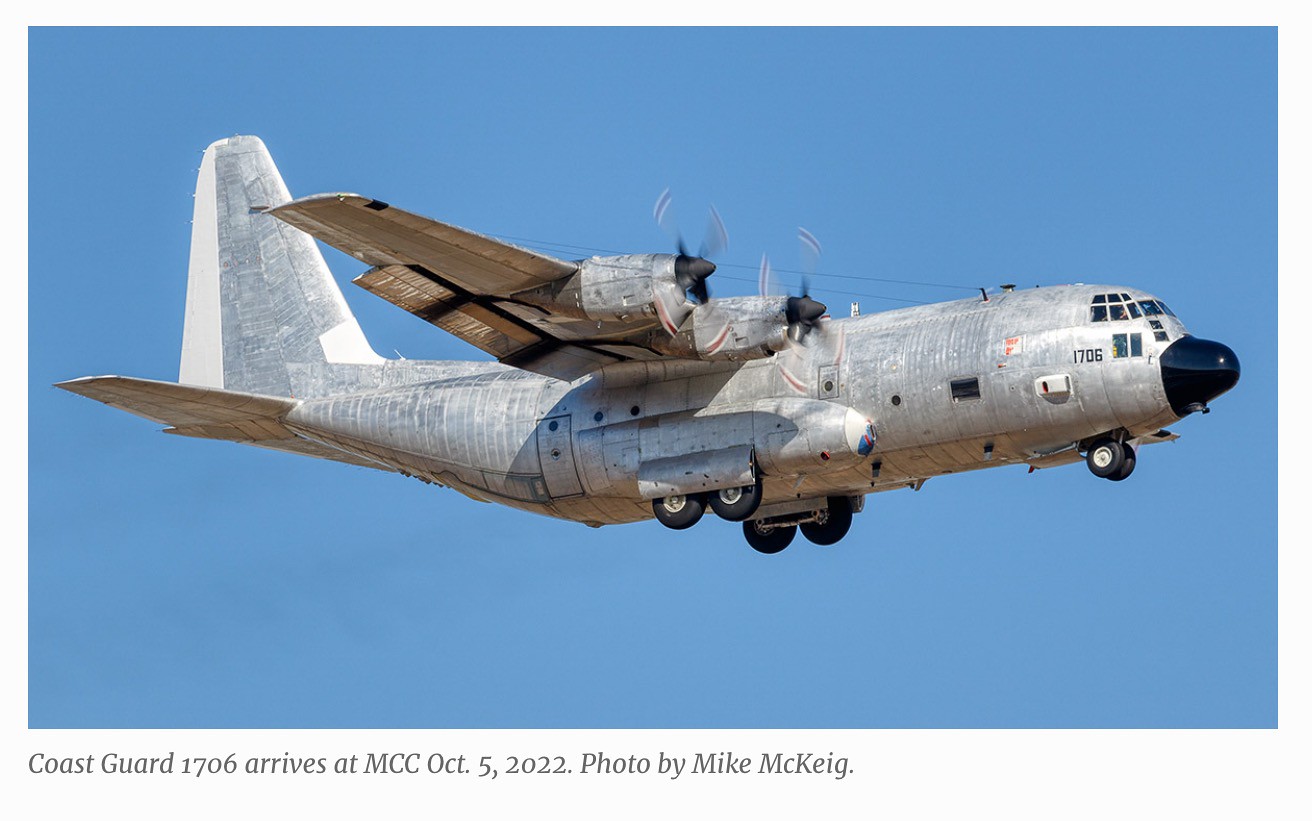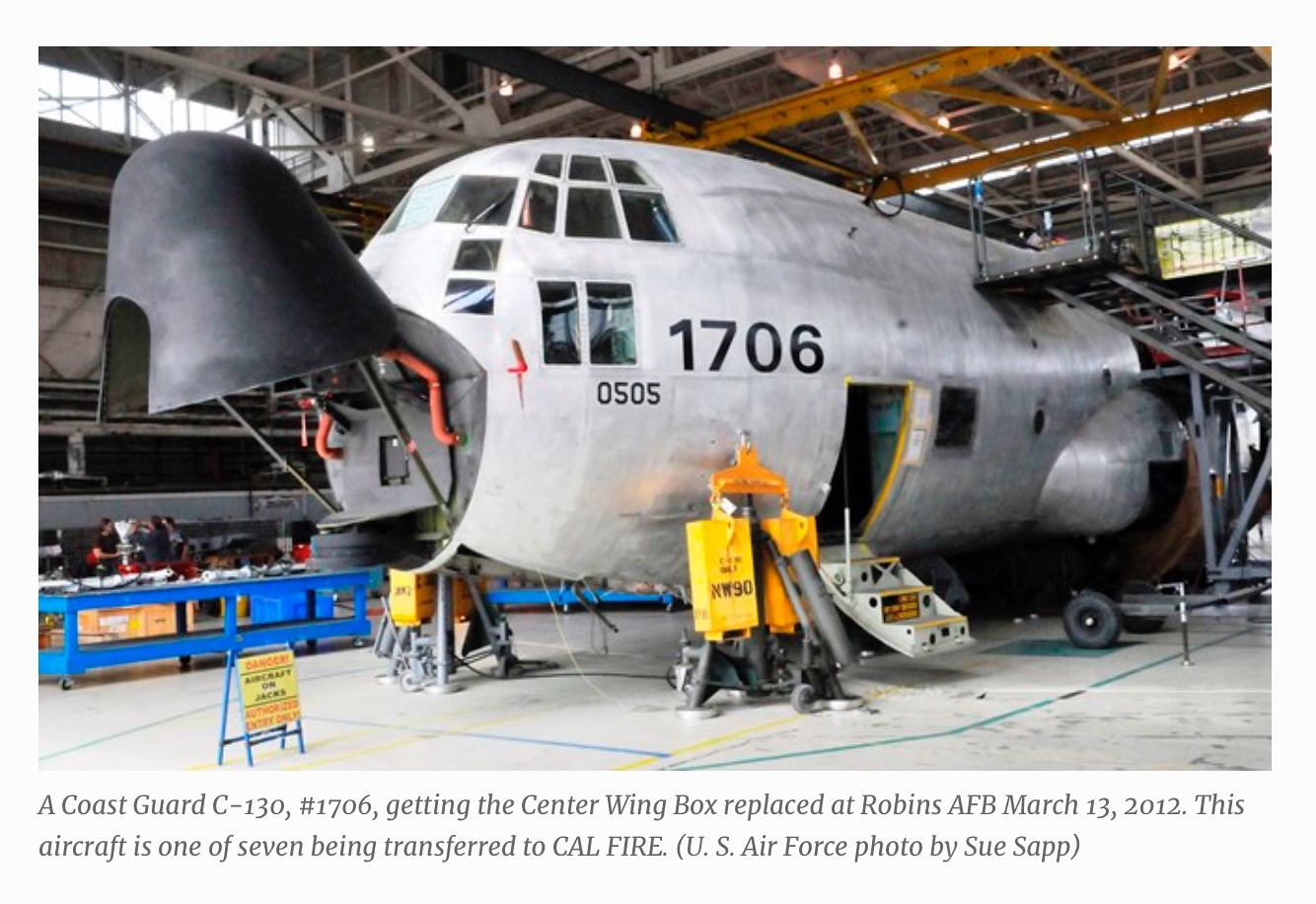Another ex-Coast Guard HC-130H gets a new wing box
Thu Oct 06, 2022 10:25 am
One of the Coast Guard C-130s obtained by Cal Fire got a new wing box in preparation for conversion to an air tanker. This is from today’s Fire Aviation website.
https://fireaviation.com/2022/10/06/coa ... mcclellan/
 6556A42E-28AA-4A9B-97CC-0CF772222844 by tanker622001, on Flickr
6556A42E-28AA-4A9B-97CC-0CF772222844 by tanker622001, on Flickr
 6A55DE2C-4661-4506-BAB1-00EB6E76D02D by tanker622001, on Flickr
6A55DE2C-4661-4506-BAB1-00EB6E76D02D by tanker622001, on Flickr
 996EA463-CACD-445F-91D5-15FF57D77CB5 by tanker622001, on Flickr
996EA463-CACD-445F-91D5-15FF57D77CB5 by tanker622001, on Flickr
https://fireaviation.com/2022/10/06/coa ... mcclellan/
 6556A42E-28AA-4A9B-97CC-0CF772222844 by tanker622001, on Flickr
6556A42E-28AA-4A9B-97CC-0CF772222844 by tanker622001, on Flickr 6A55DE2C-4661-4506-BAB1-00EB6E76D02D by tanker622001, on Flickr
6A55DE2C-4661-4506-BAB1-00EB6E76D02D by tanker622001, on Flickr 996EA463-CACD-445F-91D5-15FF57D77CB5 by tanker622001, on Flickr
996EA463-CACD-445F-91D5-15FF57D77CB5 by tanker622001, on Flickr
Re: Another ex-Coast Guard HC-130H gets a new wing box
Thu Oct 06, 2022 6:50 pm
So since they are spending a lot of money to re-box them...can we assume USCG '130s are lower time than comparable AF or Navy aurcraft?
Any corrosion issues with them being based near oceans for their operational lives?
Any corrosion issues with them being based near oceans for their operational lives?
Re: Another ex-Coast Guard HC-130H gets a new wing box
Fri Oct 07, 2022 7:49 am
Much of the Herk’s center wing issues comes from low level, tactical maneuvering, heavy airdrop, and assault takeoffs and landings. The airframes were tracked in hours and “equivalent hours” where engineers applied a factor for these operations A hypothetical example would be “1 hour of low level produces stresses like 2 hours of normal cruise, etc”. Not that the USCG birds led an event-free life, but I expect their wings were in better overall shape than their USAF sisters. I can’t speak to the corrosion, but all DoD Herks went through some pretty intensive depot maintenance and I feel certain this was looked after.
Ken
Ken
Re: Another ex-Coast Guard HC-130H gets a new wing box
Fri Oct 07, 2022 8:32 am
JohnB wrote:So since they are spending a lot of money to re-box them...can we assume USCG '130s are lower time than comparable AF or Navy aircraft?
Any corrosion issues with them being based near oceans for their operational lives?
I would NOT assume lower hours for a USCG airframe, but likely better fatigue life. USCG tends to operate airframes (especially rotary wing) often many hours longer than their DoD counterparts. As I understand it the wing box issues were influenced by corrosion, mission severity and fatigue which resulted in lowering the lifetime hours on the center wing box. Combat delivery C-130's (USAF, Reserve and National Guard) and special ops C-130's were hit especially hard by fatigue issues with the center wing box. Flying heavy and pounding into strips on combat deliveries is harsh on the airframe. US Navy and Marine (K)C-130s generally had much more fatigue life remaining. The Coast Guard C-130's likely had "easier" lives but the wing boxes were timed out. So likely high hours, but generally in good shape. Likely a better place to start than a clapped out troop carrier.
edit: Ken beat me to it
Great link Larry, rarely see a "naked" C-130
Re: Another ex-Coast Guard HC-130H gets a new wing box
Fri Oct 07, 2022 8:46 am
Ken & sd89,
Thanks for the replies.
I love that kind of information.
Thanks for the replies.
I love that kind of information.
Re: Another ex-Coast Guard HC-130H gets a new wing box
Fri Oct 07, 2022 12:35 pm
